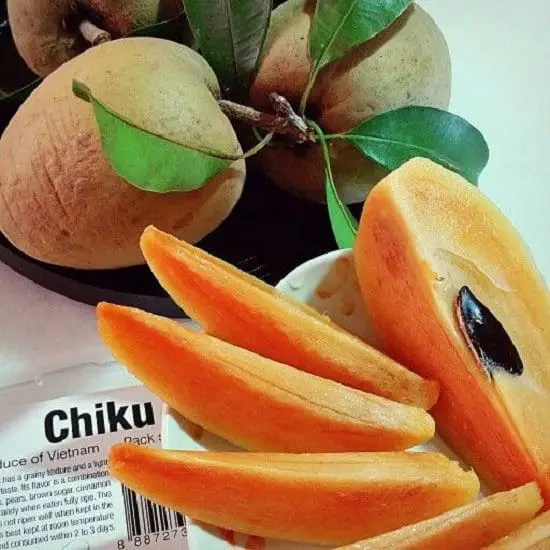Although human’s best companion can eat many fruits and veggies but Can Dogs Eat Chikoo? It is also known as Sapodilla and Naseberry!
Sapodilla, also known as Sapota or Chikoo, is a fruit tree commonly found along the tropical belt. The tree grows brown, round-shaped fruits about 10 centimeters in diameter. When ripe, the flesh of the Sapodilla tastes sweet and includes dietary fiber, Vitamins A and C and anti-inflammatory properties.
Eating fruit can provide a lot of nutrition to dogs, just like it does for humans. However, it is important to pay attention to the kind of fruit you are feeding your furry friend.
The good news is dogs can eat ripe Sapodilla when prepared properly, and will probably love the sweet taste!
How to Give Chikoo to Dogs
When attempting to give this fruit to your dog, start by removing the skin and the seeds. The skin is rough and includes saponins, which can cause stomach discomfort and vomiting in dogs. Every single fruit can contain up to six black, shiny seeds. These seeds contain cyanide and can be mildly toxic for your dog to digest if they chew before swallowing. The seeds also grow a little hook on the end that can get lodged in the throat when swallowing whole.
Also Read: Succulents that are Poisonous to Cats
Be sure that the fruit is fully ripe before feeding it to your dog. An unripe Sapodilla fruit contains high amounts of latex and tannins that can be harmful. These properties can cause a dry mouth, and eventually, mouth sores.
How Much is Enough?
Once you separate the pulp, the key is finding out how much is enough for your dog. Your dog’s dietary needs mostly consist of meat. However, nutrients in fruits and other types of greens are also essential in your dog’s diet. When feeding your dog Sapodilla for the first time, start out with a small portion. Giving your dog too much fruit all at once can cause stomach upset and diarrhea.
Once you ease your dog onto Sapodilla, and he appears to enjoy this sweet, flavorful fruit, you can then serve Sapodilla regularly. Keep in mind that the fruit should not replace the protein in your dog’s diet and can be treated as a snack.
The first time your dog gets a taste of this tropical fruit, make sure to look for symptoms of an allergic reaction. These symptoms include vomiting, diarrhea, severe itchiness, and ear or foot infections. If your dog is showing any of these signs, then be mindful about the quantity. If the symptoms require treatment, take them in to see a veterinarian.
A Word of Warning!
If you happen to have a Sapodilla tree in the yard and your dog loves to take a bite of everything. Do measures to keep him away from the fruits and leaves that fall off of the tree. Take special care to dispose of the seeds in a place where your dog would not be able to go dumpster diving.
Again, Sapodilla should always be fed correctly. Never give unripe or overripe, rotten fruits that you won’t eat yourself to your dog. The Sapodilla fruit will only be beneficial to your dog’s health if they are perfectly ripe and prepared without the seeds and the skin.
Also Read: Safe Plants for Dogs



